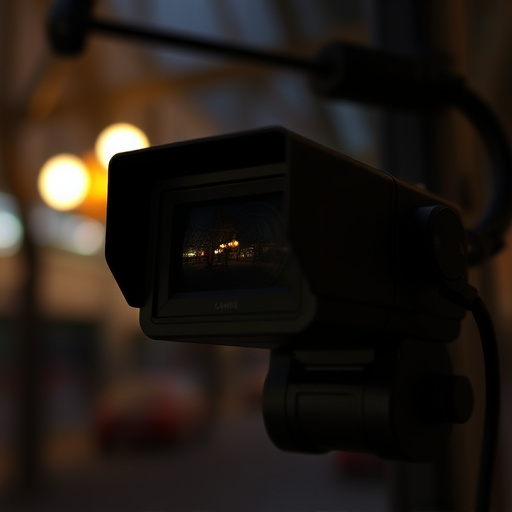Hidden cameras, now digital with high-res footage and remote access via smartphone, offer enhanced home security but raise privacy concerns. Radio Frequency (RF) detection techniques, using passive or active methods, help identify these cameras while adhering to legal privacy rights. RF detectors locate hidden cameras by analyzing existing radio signals without transmitting any new ones, ensuring safe and ethical monitoring practices for homeowners.
Uncover the insidious world of hidden cameras with our comprehensive guide. In an era where privacy is paramount, understanding how to detect these devices is essential for safeguarding your personal space. This article delves into the diverse types of hidden cameras and their operational mechanisms. We then explore advanced Radio Frequency (RF) detection techniques, empowering you to identify covert surveillance. Furthermore, we navigate legal considerations, offering practical advice for safe and lawful home monitoring using RF detection tools.
- Understanding Hidden Cameras: Types and Operations
- Radio Frequency (RF) Detection Techniques for Hidden Cameras
- Safe and Legal Practices for Home Monitoring with RF Detection Guides
Understanding Hidden Cameras: Types and Operations
Hidden cameras, also known as surveillance cameras, have evolved from simple analog devices to advanced digital systems capable of capturing high-resolution footage and transmitting it wirelessly. In the context of home monitoring, these cameras play a pivotal role in enhancing security and peace of mind. There are various types of hidden cameras designed for different purposes, each with unique operational capabilities.
Analog cameras, though less common now, still exist and operate through physical connections to a monitor or recorder. Digital hidden cameras, on the other hand, offer more flexibility with wireless options, allowing users to view footage remotely via smartphone apps or computers. These cameras can be triggered by motion sensors, recording only when activity is detected, which is particularly useful for conserving battery life in remote locations. Advanced models may also feature infrared capabilities for night vision, making them ideal for discreet home monitoring around the clock.
Radio Frequency (RF) Detection Techniques for Hidden Cameras
In the realm of hidden camera detection, Radio Frequency (RF) techniques have emerged as a powerful tool for home monitoring and security. RF detection devices are designed to uncover covert surveillance equipment by scanning for unique radio signals that many hidden cameras emit. These signals can be undetectable to the naked eye but leave distinct signatures that specialized equipment can pick up. By employing RF detection, homeowners and professionals alike can proactively safeguard their privacy and prevent unauthorized monitoring.
There are various RF detection methods available, each offering its own advantages for locating hidden cameras. Passive RF detectors analyze existing radio frequency emissions in an area, while active detectors emit signals to trigger responses from hidden cameras, revealing their presence. For home monitoring applications, passive detectors are often preferred due to their non-intrusive nature and ability to detect a wide range of RF frequencies commonly used by covert surveillance devices. This ensures a comprehensive search without causing any disturbances or alert systems that might be attached to the hidden cameras.
Safe and Legal Practices for Home Monitoring with RF Detection Guides
When employing Radio Frequency (RF) detection guides for hidden cameras in your home, it’s paramount to balance privacy concerns with legal and ethical considerations. Using such technology should be a well-informed decision, ensuring no violation of personal space or civil liberties. Stick to reputable sources when purchasing RF detectors, which can help identify common camera frequencies used by consumer devices, like security cameras.
Legalities vary across regions, but generally, you have a right to privacy in your home. Any use of hidden cameras must be disclosed, and their placement should respect the boundaries of private spaces. Using an RF detector is a safe practice as it doesn’t transmit any signals or invade privacy. It merely receives and interprets existing frequencies, enabling you to locate potential hidden devices and ensure the safety and security of your personal space without compromising your rights.
Hidden cameras, while a concern in home monitoring, can be effectively detected using Radio Frequency (RF) technology. By understanding different camera types and their operational frequencies, individuals can employ legal and safe RF detection practices to safeguard their privacy. This guide has outlined practical steps for responsible home monitoring, empowering folks to protect their personal spaces from clandestine surveillance devices, ensuring peace of mind in today’s digital era.
